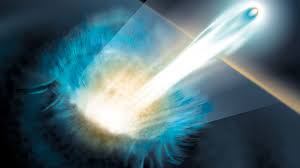By the end of 2024, China plans to showcase its state-of-the-art High Energy Photon Source (HEPS), which will produce some of the strongest synchrotron X-rays in the world. With the completion of this 4.8 billion yuan (US$665 million) facility, China has joined the elite group of countries possessing fourth-generation synchrotron light sources, which is an important milestone for Asia.
Located near Beijing, HEPS is a beehive of activity as researchers fine-tune the machine. Their efforts culminate in a light source capable of examining samples at a deep level, revealing their atomic and molecular structures in real-time. The upcoming installation of the vacuum chamber system, essential for maintaining light quality, signifies another step towards HEPS’s scientific potential.
HEPS will revolutionize research with its high-energy X-rays, allowing for precise probing of samples at the nanoscale. Compared to existing synchrotrons, HEPS offers a ten-thousand-fold improvement in time resolution. Ye Tao, a HEPS beamline scientist, anticipates a significant leap in measurement accuracy, with nanosecond-scale precision replacing the current millisecond limitations.

Upon opening in 2025, HEPS will offer researchers access to 14 beamlines catering to diverse fields like energy, materials science, and biomedicine. Future plans aim to expand this capacity to accommodate up to 90 beamlines. Tao claims HEPS will “impact every scientific field, except math.”
One key advancement facilitated by HEPS lies in protein structure studies. Traditional synchrotrons require protein purification and crystallization for structure visualization. However, HEPS’s powerful hard X-rays will enable analysis of even the smallest protein crystals with exceptional detail. Experiments that previously took days can now be completed swiftly at HEPS, ushering in a new era of scientific efficiency and productivity.


